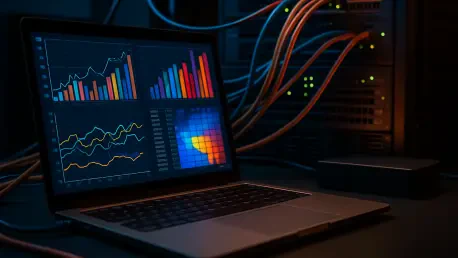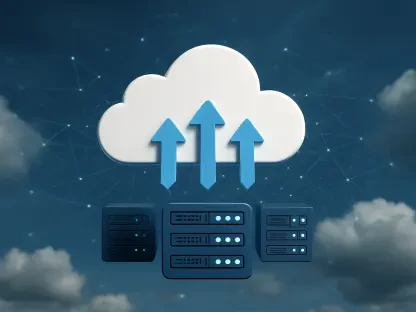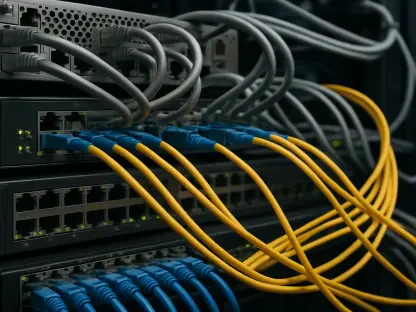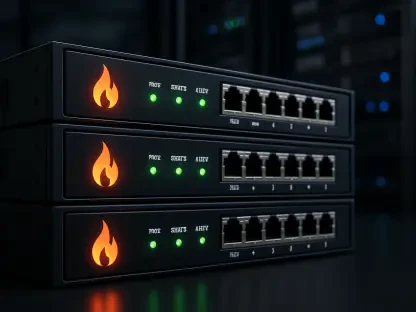In a world where digital connectivity is no longer a luxury but a necessity, edge computing emerges as a revolutionary force poised to redefine the very fabric of data processing. By decentralizing the traditional model of cloud computing and bringing data analysis closer to its point of origin—whether on devices, local servers, or edge nodes—this technology tackles critical challenges like latency, privacy concerns, and bandwidth limitations. Far from being a mere incremental upgrade, edge computing represents a seismic shift that aligns perfectly with the demands of real-time applications, enabling faster decision-making across a multitude of sectors. Its significance lies in the ability to process data where it’s generated, ensuring efficiency in an era where every millisecond counts.
The transformative potential of this technology is already evident in diverse industries such as healthcare, automotive, manufacturing, and urban planning. Picture a hospital leveraging real-time data from wearable devices to monitor patients remotely, or a smart city optimizing traffic flow through instantaneous sensor analysis. These scenarios are not distant dreams but tangible outcomes of edge computing’s capacity to enhance responsiveness. As the digital landscape continues to evolve with an ever-growing number of connected devices, the need for localized data processing becomes not just beneficial but essential, setting the stage for a profound impact on how industries operate and innovate by 2032.
Understanding Edge Computing’s Core Impact
The Shift to Decentralized Data Processing
Edge computing fundamentally alters the dynamics of data handling by moving processing capabilities closer to the source, thereby reducing dependence on far-off centralized cloud servers. This shift addresses longstanding inefficiencies, particularly in terms of latency and bandwidth consumption, which have often hindered real-time applications. Unlike traditional models where data must travel long distances for analysis, edge computing ensures that critical computations happen locally—whether on a factory floor sensor or a vehicle’s onboard system. This proximity not only speeds up response times but also minimizes the data load on core networks, paving the way for smoother, more reliable operations in environments where timing is everything. The result is a streamlined approach that caters to the urgent needs of modern digital ecosystems.
Beyond the technical advantages, this decentralized approach offers substantial benefits in data privacy and cost efficiency. By processing sensitive information locally, edge computing reduces the risk of exposure during transmission to distant servers, a growing concern in an age of frequent cyber threats. Additionally, it cuts down on the expenses tied to massive data transfers across networks, a factor especially critical for businesses managing vast amounts of information daily. Industries ranging from retail to energy are beginning to recognize these advantages, integrating edge solutions to handle everything from customer interactions to grid management with greater agility and security, thus reshaping operational frameworks at their core.
Real-World Applications
The practical implications of edge computing are strikingly evident across a wide array of sectors, each benefiting uniquely from localized data processing. In healthcare, for instance, remote patient monitoring systems rely on edge technology to analyze data from wearable devices in real time, enabling immediate alerts for critical conditions without the delays of cloud-based processing. This capability can mean the difference between timely intervention and missed opportunities, significantly enhancing patient outcomes. Similarly, in manufacturing, edge computing supports predictive maintenance by processing sensor data on-site to anticipate equipment failures before they occur, thereby reducing downtime and boosting productivity in high-stakes environments.
In the automotive industry, edge computing plays a pivotal role in the development of autonomous vehicles, where split-second decisions are non-negotiable, ensuring safety and reliability on the road. By processing sensor and navigation data directly within the vehicle, this technology enables instantaneous responses to changing road conditions. Meanwhile, smart cities leverage edge solutions for traffic management, using data from cameras and sensors to optimize flow and reduce congestion without the lag of remote server dependency. These diverse applications underscore the versatility of edge computing, demonstrating its capacity to drive efficiency and innovation across vastly different operational landscapes, fundamentally altering how real-time challenges are addressed.
Market Growth and Future Projections
Explosive Expansion by 2032
The edge computing market is on an extraordinary trajectory, with recent projections estimating a surge from a valuation of USD 156.20 billion in 2024 to a staggering USD 1,123.30 billion by 2032. This remarkable growth, driven by a compound annual growth rate (CAGR) of 28.40%, reflects the technology’s escalating importance in a world increasingly reliant on instantaneous data processing. Such figures highlight a seismic shift in how businesses and industries prioritize localized computation, recognizing its role as a cornerstone of digital transformation. By 2032, edge computing is expected to underpin a vast array of applications, from consumer tech to industrial automation, signaling its integration into the very fabric of technological advancement.
This financial ascent is not merely a reflection of market hype but a response to tangible demands across global economies. North America currently holds a commanding 33.19% share, fueled by robust infrastructure and early adoption, while sectors like telecommunications have already contributed significant revenue streams. Moreover, specific segments such as IoT applications are forecasted to reach USD 404.09 billion by 2032, driven by the sheer volume of connected devices requiring efficient, local data handling. As enterprises and governments alike invest heavily in edge solutions, the market’s expansion signals a broader acceptance of this technology as essential for maintaining competitive edges in fast-paced, data-driven environments.
Key Growth Drivers
At the heart of edge computing’s market boom lies the unprecedented proliferation of Internet of Things (IoT) devices, which generate enormous data volumes that demand immediate processing. From smart home appliances to industrial sensors, these devices create a constant stream of information that centralized cloud systems struggle to handle without delays. Edge computing steps in to bridge this gap, enabling real-time analysis that supports everything from consumer convenience to critical infrastructure monitoring. This capability is particularly vital in scenarios where even minor lags can disrupt operations, positioning edge technology as a linchpin for the expanding IoT ecosystem and driving substantial market investment over the coming years.
Beyond IoT, the push for real-time processing in high-stakes applications further accelerates market growth, particularly in industries like telecommunications, which alone accounted for USD 28.54 billion in revenue recently. These sectors rely on edge computing to support 5G networks and deliver seamless connectivity. Similarly, the demand for instantaneous data handling in autonomous systems and smart urban planning continues to fuel adoption. Hardware components, holding a 43.61% revenue share in recent data, underscore the critical role of edge servers and devices in sustaining this momentum. As these sectors evolve, the market’s trajectory points to a future where edge computing is not just an option but a necessity for operational success and innovation.
Drivers and Challenges of Adoption
Catalysts for Edge Computing Growth
The surge in IoT devices across various domains stands as a primary catalyst propelling edge computing into the mainstream, addressing a critical need for localized data processing. Smart homes, industrial plants, and urban centers are increasingly filled with connected devices—think security cameras, machine sensors, and energy meters—that produce continuous data streams. Processing this information at the edge ensures immediate insights without the bottlenecks of cloud transmission, enabling rapid responses in scenarios like home security alerts or factory equipment monitoring. This growing reliance on IoT, spanning consumer and industrial applications, drives significant demand for edge solutions, cementing their role in modern digital frameworks.
Equally compelling is the demand for ultra-low latency in applications where timing is paramount, further accelerating the adoption of edge computing. Autonomous vehicles, for example, depend on split-second processing of sensor data to navigate safely, a feat unachievable with remote cloud servers due to inherent delays. In industrial automation, real-time analysis of machine performance data prevents costly disruptions, while healthcare innovations like remote surgery require instantaneous feedback for precision. These use cases highlight why industries are prioritizing edge technology, as it directly supports mission-critical operations. The urgency for such performance is a powerful driver, pushing organizations to integrate edge solutions at an unprecedented pace.
Technological advancements and strategic collaborations also play a crucial role in fueling this growth, enhancing edge computing’s capabilities. Notable partnerships, such as the recent collaboration between Synaptics and Google to develop Edge AI for IoT devices, demonstrate how integrating advanced machine learning with edge hardware can enable sophisticated local data processing. Such innovations reduce latency and energy use, making edge solutions more viable for widespread adoption. These developments, combined with ongoing investments in edge-specific hardware and software, illustrate a robust ecosystem of progress that continuously expands the technology’s reach and impact across diverse sectors.
Security as a Barrier
Despite its promising growth, edge computing faces significant challenges, particularly in the realm of security due to its decentralized architecture. Unlike centralized systems with fewer access points, edge environments distribute data processing across numerous nodes, creating multiple vulnerabilities for cyberattacks such as malware, data breaches, and device tampering. This risk is especially pronounced in industries like healthcare and automotive, where compromised edge nodes could disrupt life-saving applications or critical safety systems. The sheer scale of connected devices in edge networks amplifies these threats, posing a substantial barrier to trust and adoption among enterprises wary of potential breaches.
Addressing these security concerns requires innovative strategies and robust frameworks to protect distributed infrastructures. Solutions like zero-trust security models, which assume no device or user is inherently trustworthy, are gaining traction as a means to safeguard edge environments. Additionally, AI-driven threat detection systems are being deployed to monitor anomalies in real time, enhancing the resilience of edge networks. While these measures show promise, the evolving nature of cyber threats demands continuous adaptation and investment in security protocols. As edge computing scales, ensuring the integrity of these systems remains a top priority for industry stakeholders aiming to mitigate risks without compromising performance.
Emerging Trends and Innovations
Containerization and Orchestration
A transformative trend in edge computing is the rise of containerization and edge-oriented orchestration, which streamline the deployment and management of applications across distributed environments. Containerization packages software and its dependencies into lightweight, portable units, allowing for consistent operation regardless of the underlying infrastructure. This approach is particularly beneficial in edge settings, where resources are often constrained, as it enhances scalability and reduces deployment complexity. By enabling applications to run efficiently at the edge, containerization supports rapid innovation and adaptation, addressing the unique challenges of managing workloads far from centralized data centers.
Edge-oriented orchestration platforms further amplify these benefits by providing tools to oversee containerized applications across numerous nodes. A prime example is the recent release of Barbara 3.0, a platform tailored for industrial edge environments, which facilitates real-time monitoring and remote updates of AI models and microservices. Such technologies simplify the intricacies of edge operations, ensuring seamless scalability and interoperability between devices and cloud systems. This trend not only boosts operational efficiency but also lowers the barriers to entry for organizations looking to implement edge solutions, marking a significant step forward in making the technology accessible and cost-effective for diverse applications.
Enhancing Efficiency
The efficiency gains from containerization and orchestration are reshaping how edge computing integrates into broader digital strategies, particularly in resource-limited settings. These technologies allow for rapid service rollouts, enabling businesses to deploy new applications or updates without the delays associated with traditional methods. For industries like retail or logistics, where edge computing might power point-of-sale systems or supply chain tracking, this agility translates into immediate competitive advantages. The ability to manage workloads dynamically at the edge also reduces operational costs, as it minimizes the need for constant data transmission to centralized servers, aligning with budget-conscious strategies.
Moreover, these innovations foster greater collaboration between edge and cloud environments, creating hybrid models that balance local processing with centralized oversight. This synergy ensures that edge nodes handle time-sensitive tasks while leveraging cloud resources for long-term storage or complex analytics, optimizing overall system performance. As more organizations adopt these tools, the focus on efficiency drives further research into energy-saving edge hardware and software, addressing sustainability concerns. The ongoing evolution of these technologies signals a future where edge computing not only meets immediate processing needs but also aligns with broader goals of operational and environmental efficiency.
Regional and Regulatory Dynamics
Geographic Growth Patterns
North America currently stands at the forefront of the edge computing market, commanding a 33.19% share valued at USD 51.84 billion in recent figures, largely due to its advanced 5G infrastructure and strategic partnerships among tech giants. Collaborations between major players like AWS and Verizon, exemplified by initiatives such as the AWS Wavelength Zone expansions, have significantly reduced latency for critical applications in sectors like healthcare and gaming. This region’s early adoption and robust technological ecosystem, bolstered by investments from cloud service providers like Microsoft Azure and Google Cloud, position it as a leader in integrating edge solutions into enterprise operations, setting a benchmark for global standards.
In contrast, the Asia-Pacific region is poised for the most rapid growth, with a projected CAGR of 32.24% through 2032, driven by swift digital transformation and widespread IoT adoption. High smartphone penetration, coupled with substantial investments in data centers and mobile networks, fuels this momentum, particularly in emerging economies like India and Indonesia. Industries such as automotive and consumer electronics increasingly depend on edge computing to manage data congestion and enable real-time applications. Expansions by companies like NTT into these markets highlight the region’s rising demand for localized processing, signaling a shift in global market dynamics as Asia-Pacific emerges as a powerhouse in edge technology adoption.
Regulatory Influences
Regulatory frameworks are profoundly shaping the deployment of edge computing, particularly through stringent data privacy and security mandates that vary by region. In the European Union, directives like the Network and Information Security Directive 2 (NIS2) and the Cyber Resilience Act impose rigorous cybersecurity standards on connected devices and critical infrastructure, ensuring robust protection but adding complexity to edge implementations. These regulations compel organizations to prioritize secure data handling at the edge, balancing innovation with compliance. While fostering safer digital environments, such policies challenge market players to adapt swiftly to evolving legal landscapes, influencing the pace and nature of technology adoption across the region.
In other parts of the world, similar regulatory pressures are evident, each with unique implications for edge computing, shaping how technology adapts to local laws. China’s Network Data Security Management Regulations enforce strict data classification and localization, requiring edge solutions to manage sensitive information within national borders, which impacts global firms operating in the region. Japan’s Act on the Protection of Personal Information sets high standards for data protection during local processing, pushing enterprises to integrate compliant security measures. These diverse regulatory environments, while enhancing overall system integrity, necessitate tailored strategies from industry stakeholders to navigate the complexities, ensuring that edge computing evolves in alignment with both technological and legal demands.
Reflecting on a Data-Driven Future
Looking back, the journey of edge computing has been marked by remarkable strides, as it grew from a niche concept to a cornerstone of digital infrastructure by 2032, achieving a market value surpassing USD 1,123.30 billion. Its ascent was fueled by the urgent needs of IoT ecosystems and latency-sensitive applications, which reshaped industries through localized data processing. Challenges like security vulnerabilities were met with innovative countermeasures, from zero-trust architectures to AI-driven defenses, ensuring that the technology scaled responsibly amidst a landscape of evolving cyber threats.
As the past unfolded, regional disparities and regulatory frameworks played pivotal roles in defining adoption patterns, with North America’s leadership and Asia-Pacific’s rapid growth illustrating diverse paths to maturity. Innovations such as containerization have streamlined deployments, while strategic partnerships among tech leaders have driven continuous advancements. Moving forward, stakeholders must focus on harmonizing global security standards and investing in sustainable edge solutions to address emerging data demands. The legacy of edge computing lies in its ability to bridge data generation with actionable insights, and the next steps involve fostering cross-industry collaboration to unlock even greater potential in an increasingly connected world.









